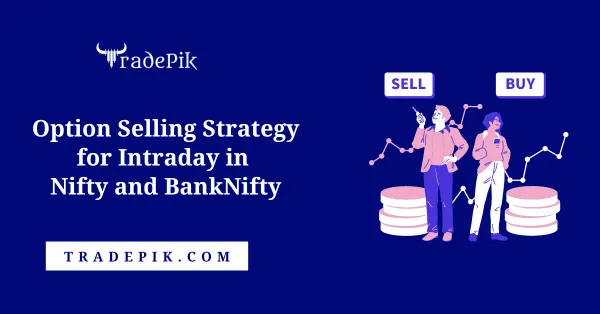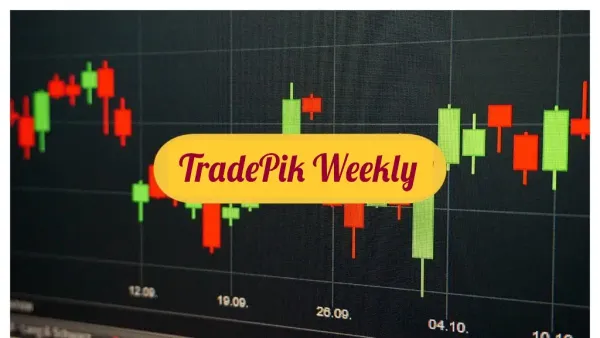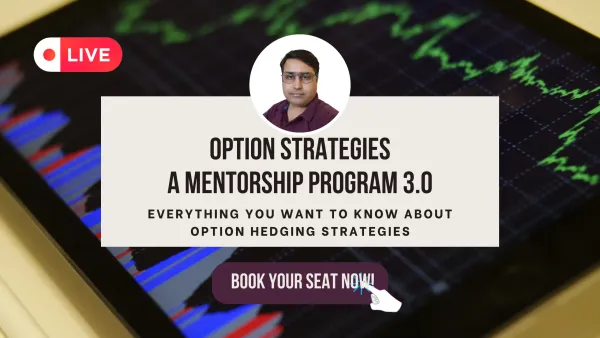Expiry Day Trading | Nifty 17350 Call that doubled in a few minutes

Hello friends, Today I have shared a screenshot on my Twitter handle that shows how my expiry day trading pic i.e. 17350 CE went up and just doubled in a few minutes. In this post, I’m sharing how and why I choose that trade on the expiry day.
So read the post to know “how a simple setup works if you know how to do it with confidence.”
Now without wasting your time, Let me share the screenshot that I have shared on Twitter first:
Expiry Day Trading: Nifty 17350 CE

Before I jump to the setup I used to pick that trade, let me share some insight about this trade.
- The chart you can see is 3 mins chart and there is a total of 10 candles between entry and target which means it’s a 30 minutes trade.
- I just use two data sets to choose this trade. One is OI data and the second is VWAP.
Few more important points I want to share here:
- I rarelly trade in Options buying. I’m a low-risk trader and prefer to trade with hedging strategies only. The reason to take this trade will share in the next section.
- It’s not a strategy or something. I just share the steps I took to initiate this trade. So do not try to copy it. Just take it as a reference to do your own research.
Check this also: Learn and Trade in Options Strategies with Sachin Sival
Expiry Day Trading: Psychology behind any trade
Before you initiate a trade, you have to analyze the trend and market behavior. Many times you fail and many times you succeed to predict it right. I take it as a 50% probability to predict it right.
Now because I know that my prediction has a 50% chance of failure, I prepare a backup plan before initiating a trade. This means what will I do if anything goes wrong. How will I minimize the risk or will I afford to lose the amount I used to take this trade?
It’s very important that you should prepare yourself for any or every consequence. It will help to make a better decision about whether you should go with that trade or not.
So I request you to do all the maths and calculations before entre any trade. Not after taking entry. If you make your backup plan after taking entry, Your emotions will definitely involve in that backup plan, and you should keep one thing in mind, “there is no place for emotions in share trading.”
Expiry Day Trading: Steps I follow to choose my trade
The first step is to look at the Open Interest data to find the trend or the participant’s activity during the live market. “Change in OI” helps to find the answer to this question. Let me share a picture:

If you look at the above Option chain, You can see that OI Change is increasing but the price is decreasing which means shorts buildup on the PUT side. What does it indicate? It indicated that participants want the price should go up so that they can book profit in their sold PUTs.
On the other hand, from 17000 CE to 17250 CE, OI Change is decreasing but the price is increasing which means short covering happens on the Call side. M I right?
From 17300 CE to 17450 CE, OI Change and price both are increasing. That means long build-UP. Right?
So what do you understand based on the above data?
The market looks bullish. Right?
So now after watching this data, Now it’s clear that we should take a bullish trade. We can either short PUTs or can buy CALLs.
But I follow a strict rule that I never sell a naked PUT. (these rules I’m teaching in my Mentorship Program). So for PUTs, we can trade only with spreads. But spreads are not managing my risk properly. Return was very less compared to the risk. So I planned to take a bet on Option buying.
Now I have two options, either I can buy 17300 CE (that was a good resistance too as per the OI data), or I can buy 17350 CE. I choose 17350 CE because the premium was low and I can treat it as a hero-or-zero type trade. 5₹ premium I can afford to lose instead of 25₹ (17300 CE price).
Now It’s clear why I choose 17350 CE to trade today? If you still have any queries, you can ask me in the comment box.
Now the second questing is: When to take entry?
To take entry I use a simple indicator i.e VWAP (volume-weighted average price). It’s always good to take entry near to VWAP intraday. It helps to reduce the risk. I’m not going deep into this, will publish a separate blog about “How to use VWAP for Intraday Trading?”
One thing you should know about VWAP is that prices always come near to the VWAP to give a clear entry and then bounce back if the trend is strong. (like you can see in the below pic)

You can see clearly that price almost toughed the VWAP and then bounce back. If the trend is not strong, then the price would give a breakdown from VWAP. You can keep a stoploss just below the VWAP. A small point stoploss for a big move.
So try to use it in your intraday trading and take entry near to the VWAP. It helps to reduce the risk per trade.
I hope now you have understood how simple is my setup for expiry day trading. Obviously, I’m not using it all the time but I believe in keeping things simple. Simple things will help to make some quick and good decisions.
These simple but excellent setups I’m teaching in my Mentorship program.
Want to know how I’m generating my monthly cheque with options?
You’re in the right place if you want to learn how to make a monthly passive income using options trading strategies.
It’s what I do, and I’ve learned the pitfalls so you don’t fall into them. Most of my students go on to make money with options trading, so why not join them?
DISCLAIMER: – we are not a SEBI research analyst. Views are posted in this weekly market newsletter only for educational purposes. There is no liability whatsoever for any loss arising from the use of this product or its contents. This product is not a recommendation to buy or sell, but rather a guideline to interpreting specified analysis methods. This information should only be used by investors and traders who are aware of the risk inherent in securities trading.





